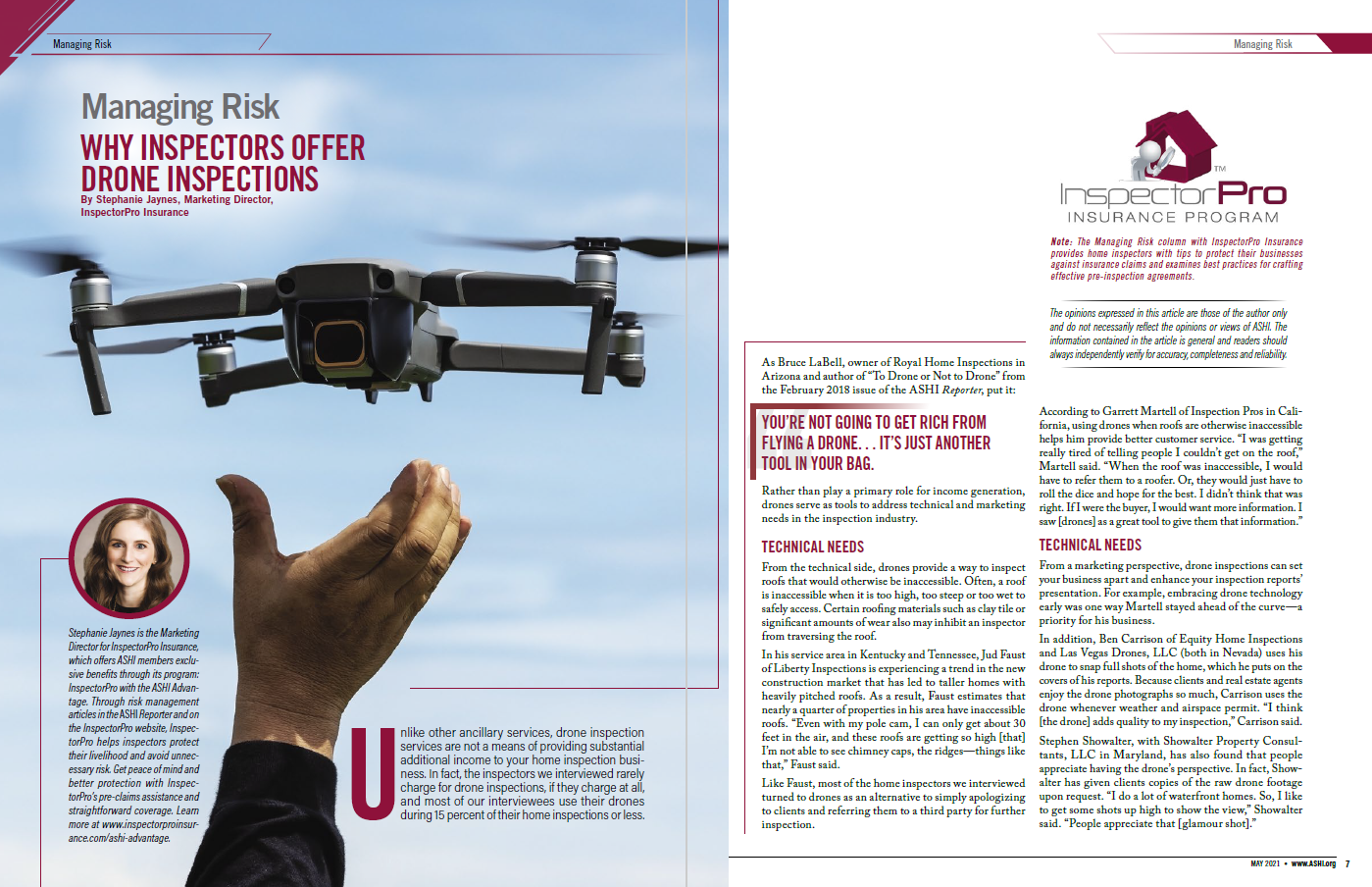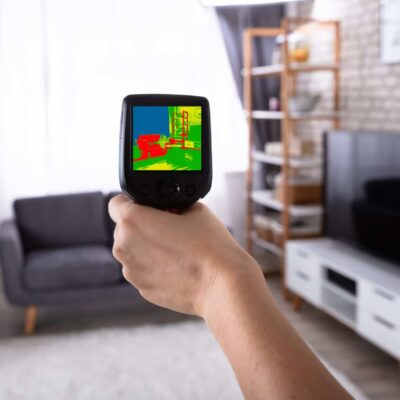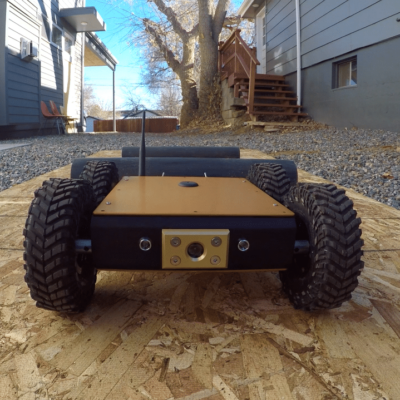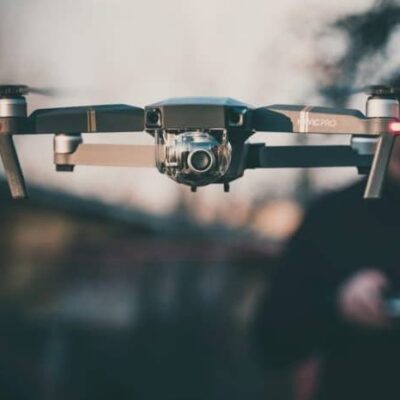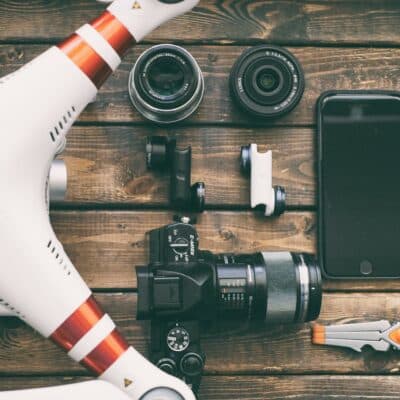Using drones for home inspections: Should you?
Last Updated June 21, 2024
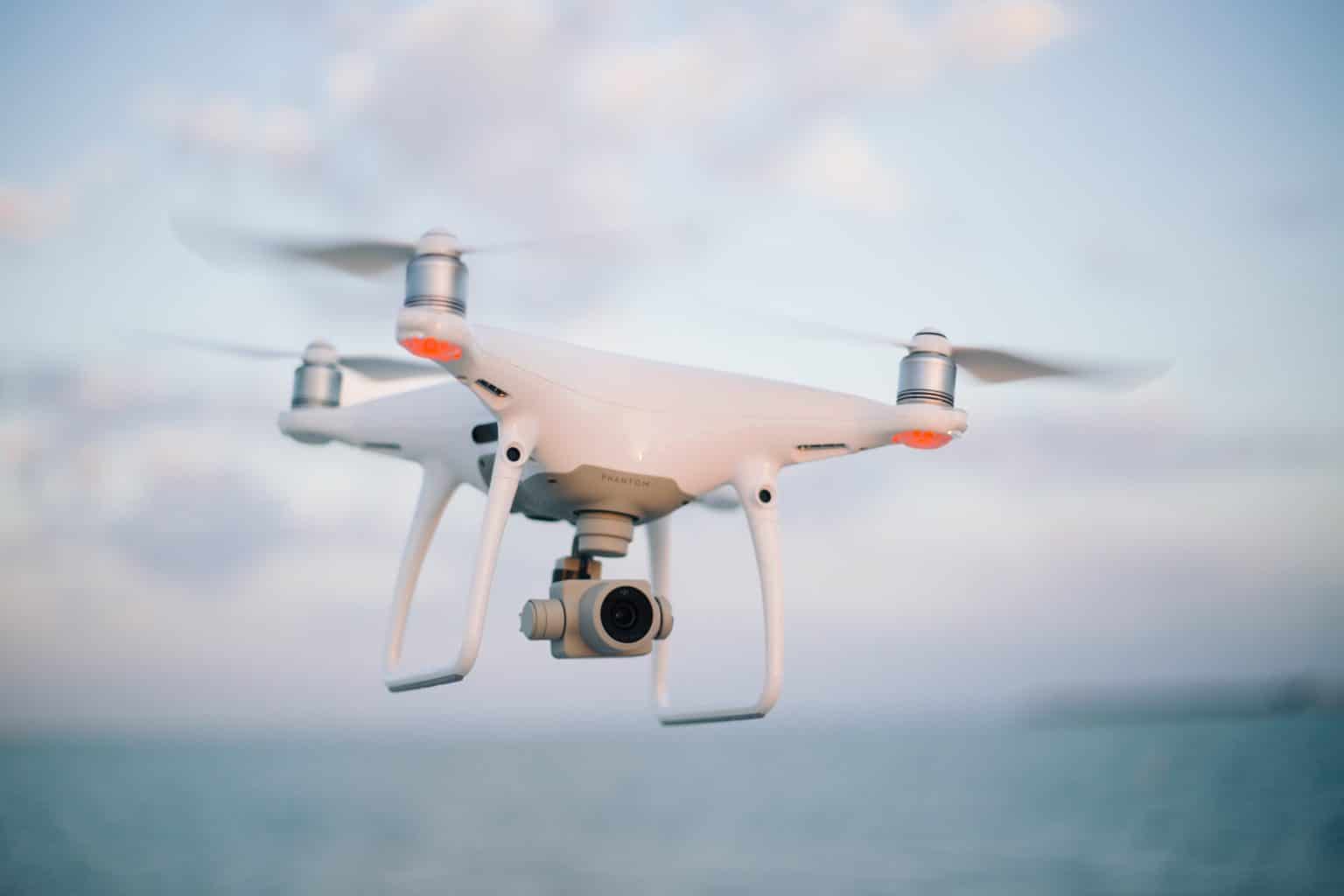
Unlike other ancillary services, drone inspection services are not a means of providing substantial additional income to your home inspection business. In fact, the inspectors we interviewed rarely charge for drone inspections, if they charge at all, and most of our interviewees use their drones during 15 percent of their home inspections or less.
As Bruce LaBell, owner of Royal Home Inspections in Arizona and author of “To Drone or Not to Drone” from the February 2018 issue of the ASHI Reporter, put it: “You’re not going to get rich from flying a drone…. It’s just another tool in your bag.”
Rather than play a primary role for income generation, drones serve as tools to address technical and marketing needs in the inspection industry.
Technical Needs
From the technical side, drones provide a way to inspect roofs that would otherwise be inaccessible. Often, a roof is inaccessible when it is too high, too steep or too wet to safely access. Certain roofing materials, such as clay tile, or significant amounts of wear also may inhibit an inspector from traversing the roof.
In his service area in Kentucky and Tennessee, Jud Faust of Liberty Inspections is experiencing a trend in the new construction market that has led to taller homes with heavily pitched roofs. As a result, Faust estimates that nearly a quarter of properties in his area have inaccessible roofs. “Even with my pole cam, I can only get about 30 feet in the air, and these roofs are getting so high [that] I’m not able to see chimney caps, the ridges—things like that,” Faust said.
Like Faust, most of the home inspectors we interviewed turned to drones as an alternative to simply apologizing to clients and referring them to a third party for further inspection.
According to Garrett Martell of Inspection Pros in California, using drones when roofs are otherwise inaccessible helps him provide better customer service. “I was getting really tired of telling people I couldn’t get on the roof,” Martell said. “When the roof was inaccessible, I would have to refer them to a roofer. Or, they would just have to roll the dice and hope for the best. I didn’t think that was right. If I were the buyer, I would want more information. I saw [drones] as a great tool to give them that information.”
Marketing Needs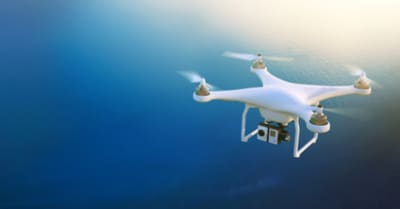
From a marketing perspective, drone inspections can set your business apart and enhance your inspection reports’ presentation. For example, embracing drone technology early was one way Martell stayed ahead of the curve—a priority for his business.
In addition, Ben Carrison of Equity Home Inspections and Las Vegas Drones, LLC (both in Nevada) uses his drone to snap full shots of the home, which he puts on the covers of his reports. Because clients and real estate agents enjoy the drone photographs so much, Carrison uses the drone whenever weather and airspace permit. “I think [the drone] adds quality to my inspection,” Carrison said.
Stephen Showalter with Showalter Property Consultants, LLC in Maryland has also found that people appreciate having the drone’s perspective. In fact, Showalter has given clients copies of the raw drone footage upon request. “I do a lot of waterfront homes. So, I like to get some shots up high to show the view,” Showalter said. “People appreciate that [glamour shot].”
Investments Inspectors Make
Licensing
Since 2016, the Federal Aviation Administration (FAA) has required commercial drone users to obtain a remote pilot certificate (RPC), re-certify biannually, register their drone and follow other rules.
To obtain an RPC, inspectors must pass a 60-question test on drone regulations and operations. Most inspectors take a class in-person or online to prepare for the exam. Jon Bolton of The Inspectagator in Florida recommends RemotePilot101.com, which covers not just the technical aspects of drone operation, but also airspace law.
The FAA regulates airspace, restricting flights temporarily or permanently in certain areas. For example, drone use is strictly prohibited near federally sensitive areas, such as the White House and Camp David. Drone pilots also cannot fly within five miles of most airports without giving advance notice to airport operators.
According to Paul Duffau of Safe@Home Inspections in Washington, airspace law is one of the most important liability factors affecting drone pilots. Furthermore, Duffau suggests that many home inspectors who are willfully or unintentionally unaware of airspace regulations are putting their businesses at risk.
“In one of my primary markets, it is illegal to lift a drone off the ground without FAA authorization or a waiver,” Duffau wrote to us via email. “[Many] inspectors flying drones are doing so illegally—at least part of the time.”
Training
While coursework to receive your RPC may seem daunting, Jameson Malgeri of MKC Associates in Massachusetts recommends that home inspectors take a class before they commit to purchasing a drone.
By taking the course first as Malgeri suggests, inspectors can avoid investing in an expensive drone and substantial flight training only to decide later that drones aren’t for them. (For some perspective, Malgeri estimates that he did 30 hours of online classroom training and 50 hours of flying prior to his first drone inspection.) “If you’re interested, start with taking a course because there is a big learning curve,” Malgeri said. “And if the course doesn’t seem to be for you, then… maybe [don’t] continue.”
Once you do graduate to flight training, home inspectors recommend spending time getting comfortable with your equipment in a safe environment. “Practice and get comfortable in a wide open area where there are no overhead power lines, very few buildings and very few overhead trees,” Showalter said. “You want a place where there are no people, [too].”
Before allowing yourself or other inspectors to use drones during your home inspections, LaBell recommends asking these questions to determine your readiness to safely fly:
- How experienced are you as a pilot?
- Do you know how to avoid collisions?
- How to fly over people?
- Do you always keep the drone in your line of sight?
- Have standard set-up, in-flight and take-down procedures?
- Do you understand how to adequately interpret drone camera footage?
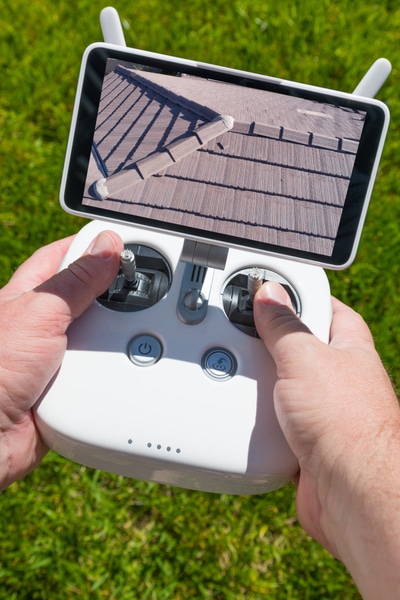 Equipment
Equipment
While there are plenty of drones in the market that cost less than $1,000, the home inspectors we interviewed were skeptical of most inexpensive models.
“I think that the biggest, most important thing about using a drone is using the right drone,” Malgeri said. “The more expensive the drone is, the safer it is, and it doesn’t allow you to crash [as easily].” For example, Malgeri’s drone has sensors to prevent collisions. It also self-stabilizes when weather, like a gust of wind, throw it off its path.
According to Martell, a more expensive model is an important investment due to its increased credibility and additional features. “Don’t get the cheap ones because it’s going to look cheap, and it’s not going to work the way you want it to,” Martell said.
For Joshua Ryan of Lifeline Inspection Services in Georgia, purchasing a higher quality drone helps manage risk. “When it comes to drones, you pay for what you get,” Ryan said. “When you’re doing inspections, you want to use the best so you don’t have a cheap drone that flies into the house.”
Getting reliable equipment will also lessen the likelihood of errors and omissions (E&O) claims.
When looking for a drone to purchase, Ryan recommends looking for camera quality. For Ryan, it was important that he could see if there was no caulking on the flashing down the vent booth from 10 feet in the air.
In addition, Ryan prioritized finding a user-friendly drone. While Ryan himself is tech-savvy, other members of his inspection company take more time to learn new technologies. Therefore, it was important to Ryan to find a drone that would work well for every member of his inspection team.
How to choose
When choosing a drone, the inspectors we interviewed recommend asking yourself the following questions:
- What’s the camera quality? (Note image size.)
- What flight stabilization features are available?
- With a fully charged battery, what is the flight time? Is it the same in cold weather?
- Does the drone manufacturer offer good customer service, including technical support, tutorials and a warranty?
By learning about drone capabilities, characteristics and constraints, you’ll be better equipped to choose a drone that best suits your business’ needs.
Endorsements
As a drone operator, you are responsible for damage or injury caused by your drone. General liability home inspector insurance covers you if you’re accused of damaging property or injuring a person during a drone inspection.
According to Michael Spaargaren of First Choice Inspectors in Illinois, carrying general liability insurance can give home inspectors additional protection when the technology fails.
“The drones that we use have avoidance technology on there—anti-collision software built in—so it won’t let you get too close to a roof [or] a person,” Spaargaren said. “[But general liability coverage] is a nice fail safe. You never know if the signal is going to jam, if it’s going to be unresponsive, [or] if you’re going to get a flyaway situation.”
Some examples of what a general liability claim involving a drone might look like:
- While taking off on a windy day, you lose control of your drone and crash it through a window.
- During your roof inspection, you get distracted by your client. The drone does a nosedive into the roof and damages several shingles.
- Your drone loses battery power midflight and falls on your client’s child. The blades cut them badly enough that the child has to get stitches.
General liability coverage for your drone
Claims like the examples above can cost you precious time and money. However, when you work with an insurance company familiar with the home inspection industry, their claims team can minimize or eliminate your potential liability by properly handling claims.
InspectorPro includes general liability coverage for drones in our standard inspection insurance policy. However, many providers don’t. With those providers, you’ll need to add drone coverage with an endorsement for an additional cost.
Endorsements are amendments to your policy that modify coverage, usually by adding additional coverage or changing exclusions. In this case, a drone endorsement to your general liability policy gives you coverage for bodily injury and property damage caused by your drone—which wouldn’t ordinarily be granted with most carriers. Alternatively, with an InspectorPro policy, drone coverage is included at no additional cost.
Equipment Coverage
What about coverage for physical damage to or loss of your drone? That’s where inland marine, or equipment, coverage comes in.
Formally known as inland marine coverage or a commercial property floater, equipment coverage insures your inspection tools and equipment—like your drone. Unlike standard property insurance, equipment coverage protects your tools and equipment regardless of their location. This is important since, rather than housing your drone in an office, you’re flying it during inspections.
In most cases, equipment coverage for home inspectors reimburses you for the replacement cost of your stolen or damaged equipment or tools. Oftentimes, coverage extends to not just items you own but also to items you lease or rent.
Examples of equipment insurance claims that involve a drone include:
- Someone burglarizes your locked inspection vehicle and swipes your drone.
- You crash your drone, and the fall damages the wings and internal computer.
Many equipment insurance policies cover physical loss or damage caused by perils, such as falling objects, fire, lightening, sink hole collapse, vandalism, vehicles and water damage. To see what perils are and are not covered, review the Conditions and Definitions sections of your inland marine or equipment insurance policy.
Limiting Your Liability Against Drone-Related Claims
Carrying a drone endorsement and equipment coverage are two of the most important things you can do to protect your business against drone inspection-related claims. However, there are additional risk management techniques you can employ to safeguard your business.
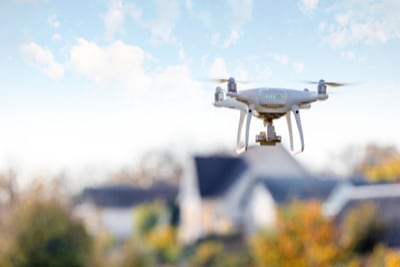 Get on the roof whenever you can
Get on the roof whenever you can
Despite advancements in drone technology, Rick Smith of Absolute Assurance Home Inspection Services, LLC in Maryland argues that drones don’t compare to looking at the roof with your own eyes. “You can’t get the same level of detail flying a drone,” Smith said.
Bolton agrees that drones work best as a backup plan when traditional inspection methods fail. “Personally, I do not think drones should be used for roof inspections unless there’s no other way to get up there,” Bolton said.
According to inspectors, a boots-on-the-roof inspection allows a home inspector to better examine roofing materials and their integrity. The ability to use additional senses, such as touch, enables inspectors to better diagnose defects.
“If you have weak sheathing or something like that, when I walk on it, I can feel it,” Faust said. “I may be able to see [a potential issue], but until I can get up there and touch it and feel it, I don’t know if it’s an actual defect that I need to call out.”
Faust also stated that walking on the roof can help him determine areas of interest during the attic inspection. Say, for example, a portion of the roof feels weaker than other areas. Then, Faust knows to pay special attention to that area in the attic.
Drones are not a one-size-fits-all solution. Just like all of the tools in your kit, there are times to use a drone, and then there are times you need to get your boots on the roof.
Have a thorough pre-flight procedure
According to LaBell, one of the best ways to avoid a GL claim is to have a thorough pre-flight procedure. During such a procedure, inspectors should examine the drone for potential problems, such as nicked propellers or low battery life.
According to Carrison, using the drone adds about 30 minutes to his inspection: 15 minutes in the air and 15 minutes executing his pre-flight and landing processes.
For Mike McFadden of Hero Inspection Services in Florida, performing a rigorous pre-flight procedure is common sense. “[A drone is] just like any other tool. If you’re going to use a saw to cut wood, you want to make sure that that saw is maintained, that it has a sharp blade,” McFadden said. “[With] a drone, you want to make sure your batteries are charged so that, when you get up in the air, you don’t… lose control. Regular maintenance on all tools is important.”
In addition, inspectors should assess the environment to ensure they can take off and land safely. “I’m looking for trees, power lines, anything that may be a hindrance to my drone,” Faust said. “Ninety percent of your safety in flying is in your preparation.”
Ryan recommends taking off away from the house and trying to maintain a six-foot distance from the property. “That way, if something were to go wrong or a gust of wind came up, [the drone] won’t run into the house,” Ryan said.
And don’t forget to check the weather, particularly the wind. “You don’t just have to be aware of the wind on the ground. If you’re going to fly your drone up 30 to 50 feet, you have to analyze the wind up there because it’s different,” McFadden said.
Set your clients’ expectations
According to Smith, it’s important to communicate appropriate expectations to both clients and realtors. Part of setting expectations involves instructing them to keep a safe distance and to not walk underneath the drone during flight. “You’ve got to enter [drone inspections] with a ‘safety first’ frame of mind,” Smith said. “It’s not a joke. You’ve got to take it seriously…. [Drones] are not toys.”
Showalter agrees that it’s important to set a precedent with clients and agents. “You need to be focused on flying the drone, not entertaining people,” Showalter said. “Be comfortable saying, ‘Hey, let me focus on [flying], and we’ll get back to you.’”
Another part of setting expectations is underscoring the limitations of drones. Clients need to understand what drones can and cannot detect. In addition, it’s important to convey that certain conditions may inhibit your ability to perform a drone inspection.
Showalter recommends including language in your report regarding the limitations of drones as well as a maximum wind speed for flight.
By setting expectations in writing, inspectors can decrease the likelihood of drone-related claims and make such claims more defensible.
To learn more about properly setting expectations, read our article “How to set home buyers’ expectations.”
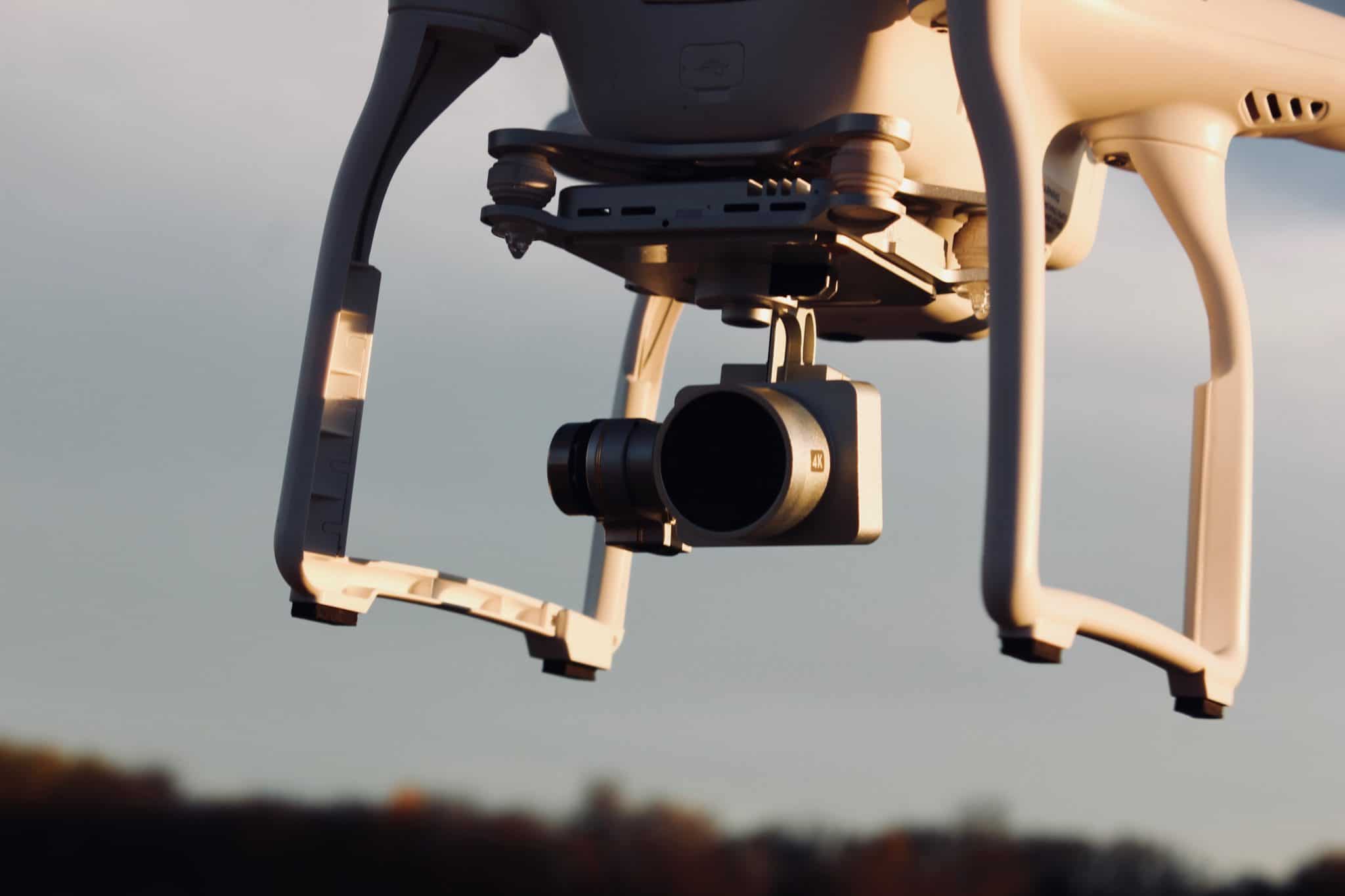 Address privacy concerns
Address privacy concerns
However, it’s not just clients and agents that inspectors have to worry about. Drones tend to attract attention from neighbors, too. Part of managing risk against drone-related claims involves appreciating the misunderstandings surrounding commercial drone flight. “We’re flying in private residential areas, and people are worried about their privacy being interrupted more than anything else,” LaBell said.
In June 2018, a resident adjacent to an inspection property accused Florida home inspector Frank Jensen of Coast 2 Coast Home Inspections of invading her privacy with his drone inspection. The resident called the police, wrote a one-star Google review on Jensen’s business page, and contacted a lawyer, only to drop the charges four days later. (Read the full story here.)
To avoid distractions from and misunderstandings with curious neighbors, LaBell recommends putting flyers on neighbors’ front doors that briefly explain what’s going on. By explaining the nature of the inspection, how long it will take, what it will sound like and so on, LaBell finds that people are both less alarmed and more respectful.
One of the ways Martell has mitigated risk of complaints is by keeping his drone focused on his inspection properties. “We’re only up just over the [inspection] house. We’re not going over neighbors’ properties or down the street for a big aerial shot,” Martell said.
Bolton recommends mitigating your risk of such allegations by having copies of key documents on hand, such as your:
- license,
- flight plan,
- and VFR sectional chart
Having these documents available to show concerned neighbors—or, in worse cases, the police—will allow you to speak with intelligence and authority regarding your drone inspection.
Using Drones for Inspections
Are you looking for a way to inspect inaccessible or unsafe roofs? Want to set your business apart and enhance your inspection reports’ presentation? Think adding another tool to your belt could help you offer more information to your clients?
If you answered “yes” to any of these questions, perhaps it’s time for your company to offer drone inspections.
This article was published in the ASHI Reporter in May 2021. See how this story appears in print below.


